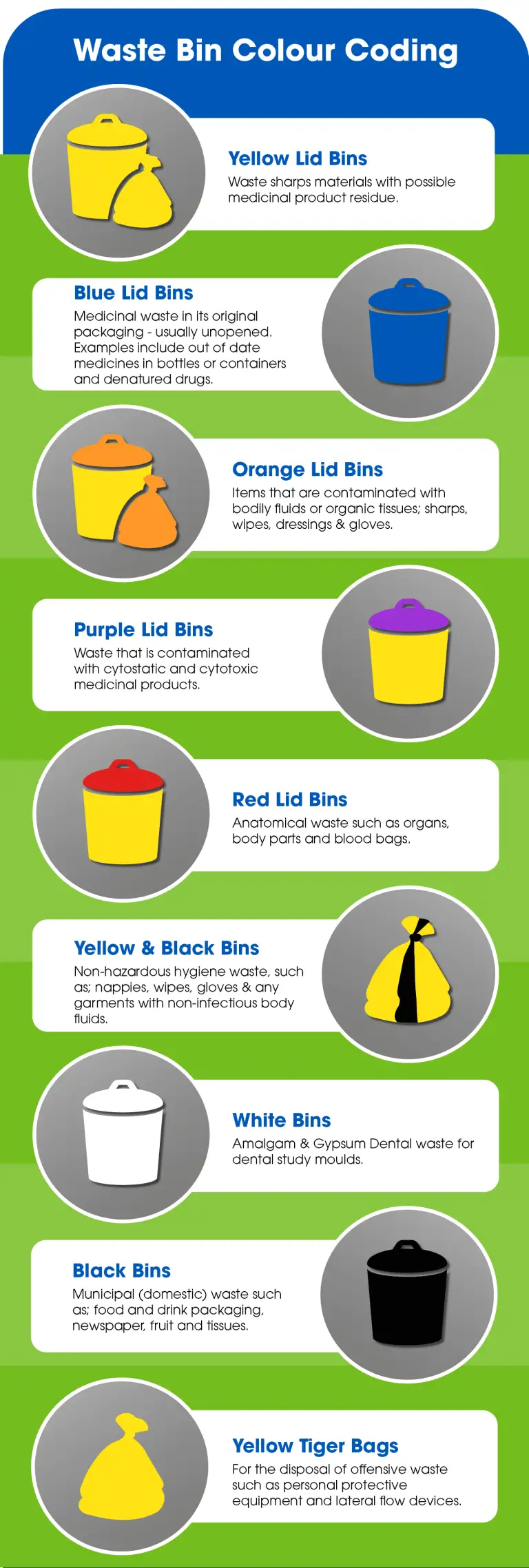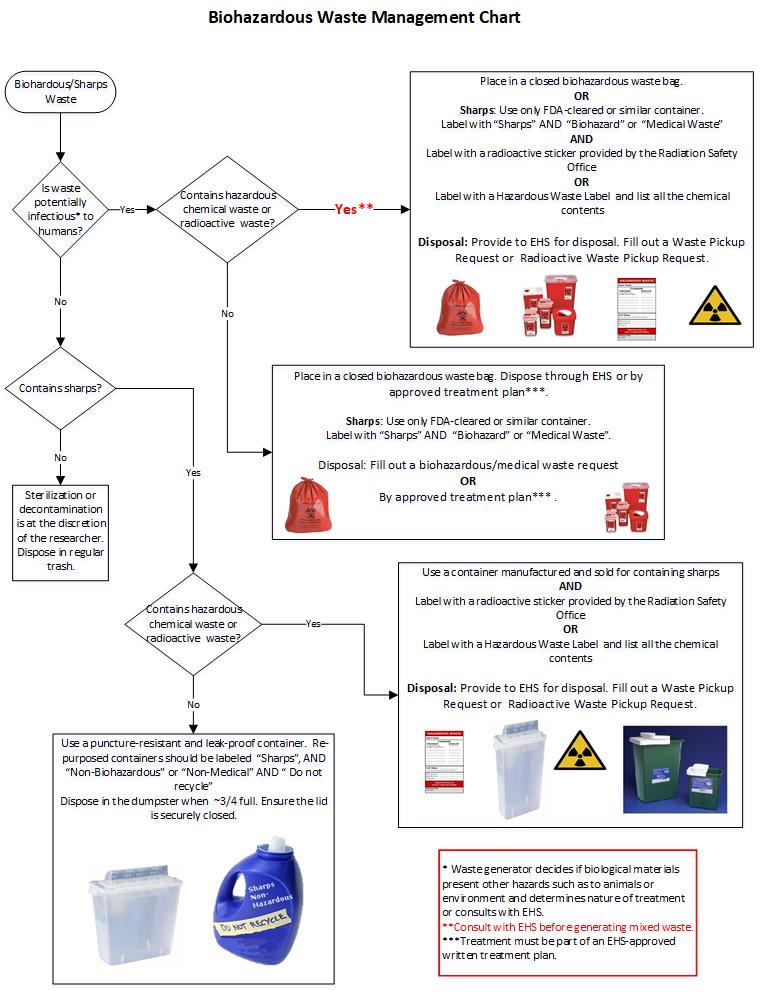Your Ally in Medical Waste Removal: Professional Service with Environmental Care
Wiki Article
Reliable Methods of Medical Waste Disposal
Reliable methods of clinical garbage disposal are essential in preserving public health and wellness and ecological safety. Medical waste, including sharps, pathological waste, and pharmaceutical waste, have to be taken care of and gotten rid of correctly to avoid the spread of infections and shield the environment. This requires adherence to stringent guidelines and the execution of professional waste monitoring practices.Correct partition of medical waste, risk-free and secure storage, efficient therapy and disinfection methods, and environmentally-friendly disposal choices are vital elements of an efficient medical garbage disposal system. Expert waste administration solutions play an important duty in making certain compliance with policies and reducing the dangers connected with improper disposal. By using these approaches, medical care centers can contribute to a safer and cleaner environment while safeguarding the wellness of the community.
Correct Partition of Medical Waste
Correct segregation of medical waste is vital for ensuring the effective and safe disposal of these possibly harmful products. Medical waste refers to any waste created during healthcare tasks, such as healthcare facilities, facilities, research laboratories, and research facilities. It consists of a large range of materials, such as used needles, syringes, infected dressings, ran out or unused medicines, and organic products.By segregating medical waste, health care facilities can minimize the risk of infections, injuries, and ecological contamination. The process entails categorizing waste into different types, such as sharps, transmittable waste, pharmaceutical waste, and non-hazardous waste. Each type requires particular handling, packaging, and disposal approaches to avoid exposure to healthcare workers, waste monitoring workers, and the public.
To make certain correct segregation, healthcare centers need to establish clear guidelines and supply appropriate training to team member. This consists of informing workers on the various waste classifications, proper product packaging methods, and the usage of suitable containers - WasteX Medical Waste Disposal. Furthermore, clear signage and color-coding systems can be executed to promote the identification and segregation of various waste kinds
Safe and Secure Storage of Medical Waste
Safe and safe storage of clinical waste is important for keeping the honesty and control of potentially dangerous materials. Correct storage not only protects healthcare employees and the basic public from exposure to hazardous materials however additionally stops ecological contamination.To make sure risk-free storage space, medical centers ought to comply with details standards. Waste should be stored in puncture-resistant and watertight containers that are classified properly. These containers must be firmly sealed to stop any kind of leak or spills. Additionally, the storage space location must be safe and inaccessible to unauthorized workers, decreasing the risk of unintended exposure.
Appropriate partition of clinical waste is additionally vital for safe storage. Various sorts of waste, such as sharps, infectious products, and pharmaceutical waste, ought to be separated to protect against cross-contamination. This segregation can be accomplished via using color-coded containers or bins.
Regular tracking and evaluation of the storage location are crucial to determine any kind of prospective risks or breaches. This includes monitoring for indications of damages or damage in the containers, making certain correct air flow, and monitoring temperature level and humidity degrees.
Reliable Treatment and Sanitation Approaches

One frequently made use of therapy technique is autoclaving, which involves subjecting the waste to high-pressure vapor at temperature levels above 121 degrees Celsius. One more technique is incineration, which involves melting the waste at high temperature levels.
Chemical disinfection is another reliable technique for dealing with clinical waste. This approach involves making use of anti-bacterials such as chlorine compounds, phenolic substances, or hydrogen peroxide to kill or inactivate virus (WasteX Medical Waste Disposal). Chemical disinfection is usually utilized for fluid waste, such as lab examples or bodily liquids
In recent years, different treatment approaches such as microwave disinfection, irradiation, and organic therapy have likewise gained focus. These methods use advantages such as minimized environmental influence and energy intake compared to typical methods.
Environmentally-friendly Disposal Options
In the realm of medical waste disposal, taking into consideration environmentally-friendly choices is vital. Medical care facilities generate a considerable quantity of waste, including transmittable products, pharmaceuticals, and chemicals, which can present serious threats to human health and wellness and the environment otherwise managed correctly. There are several environmentally-friendly disposal alternatives available that can assist minimize these risks.
One such alternative is recycling. Reusing clinical waste involves setting apart and refining certain materials for reuse or repurposing. For instance, plastics, glass, and metal containers can be recycled, lowering the demand for new products and decreasing the amount of waste sent to garbage dumps. Additionally, some healthcare facilities have carried out reusing programs for sure medical devices or devices, more lowering waste generation.
This method involves transforming clinical waste right into power through processes like incineration or anaerobic food digestion. Anaerobic food digestion, on the other hand, breaks down natural waste in the lack of oxygen, creating biogas that can be used for electrical power or heat generation.

Benefits of Professional Waste Administration Provider
One substantial benefit of professional waste administration solutions is the enhanced effectiveness in handling and disposing of medical waste. By utilizing specialist waste administration services, healthcare facilities can guarantee that all medical waste is managed YOURURL.com and disposed of effectively, decreasing the danger of contamination and the spread of conditions.Professional waste monitoring solutions utilize experienced and seasoned personnel that are knowledgeable about the guidelines and guidelines for medical waste disposal. They have access to customized tools and devices that allow them to manage various sorts of medical waste safely and successfully. These solutions additionally have reputable treatments and procedures in position to guarantee that waste is segregated, packaged, carried, and disposed of in compliance with local, state, and government regulations.
Moreover, professional waste monitoring solutions can supply healthcare centers with detailed waste administration services. They can supply solutions such as waste collection, disposal, treatment, and transportation, tailored to the certain demands and demands of the center. This removes the worry of managing waste internally, enabling medical care team to concentrate on supplying high quality patient treatment.
Verdict
In verdict, reliable approaches of medical waste disposal involve proper segregation, risk-free storage space, therapy and sanitation, and environmentally-friendly disposal alternatives. These techniques make sure the secure handling and monitoring of clinical waste, preventing the spread of infections and protecting the environment.Clinical waste, including sharps, pathological waste, and pharmaceutical waste, must be handled and disposed of correctly to avoid the spread of infections and safeguard the atmosphere.Appropriate segregation of medical waste, protected and safe storage, effective therapy and sanitation techniques, and environmentally-friendly disposal choices are essential elements of an efficient medical waste disposal system. The process entails classifying waste right into different kinds, such as sharps, contagious waste, pharmaceutical waste, and non-hazardous waste. By utilizing professional waste monitoring services, healthcare facilities can ensure that all medical waste is handled and disposed of appropriately, reducing the threat of contamination and the spread of diseases.
Expert waste management services utilize qualified and knowledgeable employees who are well-informed about the policies and standards for clinical waste disposal.
Report this wiki page